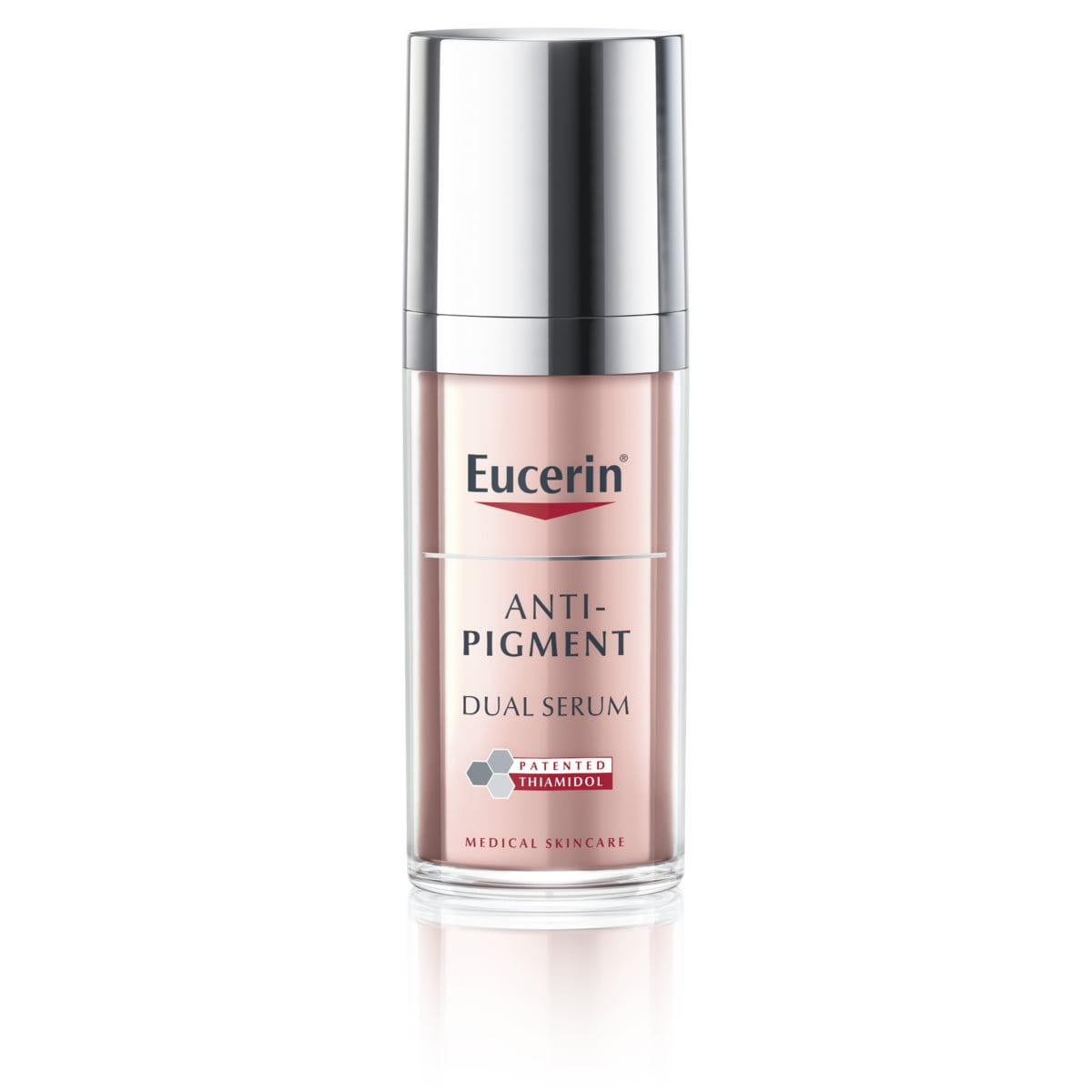What is hyperpigmentation?
Uneven skin tone (otherwise known as pigmentation or hyperpigmentation) is a common skin complaint. Pigmentation often present as dark marks, age spots/sun spots or dark patches and are worsened by regular sun exposure.
Hyperpigmentation is caused by an increase in melanin production. Melanin is the natural pigment that gives our skin, hair and eyes their colour. A number of factors can trigger an increase in melanin production, but the main ones are sun exposure, hormonal influences, age and skin injuries or inflammation.
How do I get rid of uneven skin tone?
While prevention is best, once you have pigment spots, there are steps you can take to help fade them and prevent their reappearance. Continue reading to find out how to restore your original skin tone and prevent hyperpigmentation in the first place.
What can I use for uneven skin tone on my face?
There are a variety of products you can use for uneven skin tone on your face. However, what’s even more important is trying to prevent uneven skin tone affecting you at all. This will ensure that you have an even skin tone, keeping you feeling young.
You may notice different shades of pigmentation on your face.
Using a broad-spectrum sunscreen every day can help prevent hyperpigmentation.
Sun protection is the most significant step you can take in helping to prevent hyperpigmentation in the first place. It’s important to remember that the sun’s rays affect skin even on cloudy days, so give your skin the daily protection it needs.
Are you looking for products for even skin tone? Then look no further.
As well as reducing dark marks, Eucerin Even Pigment Perfector Day Cream SPF 30 offers effective UVA and UVB (SPF 30) protection and prevents the formation of additional sun-induced pigment spots.
Limiting skin’s exposure to the sun will also help to reduce instances of hyperpigmentation. Try to keep out of the sun during its most intense hours and wear protective clothing including sunhats and glasses whenever possible. When skin is exposed to the sun, apply and regularly reapply a sun protection product that has a suitable SPF level and which has been specially formulated for your skin type and condition.
You can find out more about the Eucerin range of superior sun protection products here.
How do you treat hyperpigmentation?
There are a variety of solutions that you can use to treat hyperpigmentation.
Dermo-cosmetic solutions for hyperpigmentation
If you are concerned about hyperpigmentation, look out for skin-care products that have been formulated to address this concern and that are clinically and dermatologically proven to be effective.
The Eucerin Even Pigment Perfector range has been specially formulated to reduce dark marks for more even and radiant skin. All four products in the range—a day cream, night cream, serum and spot corrector—contain Thiamidol, an effective and patented ingredient that acts at the root cause of dark marks by reducing melanin production.
Furthermore, with SPF 30 and UVA filters, Eucerin Even Pigment Perfector Day Cream SPF 30 offers effective protection from the sun and prevents the formation of additional sun-induced pigment spots.
Whilst Thiamidol is Eucerin-patented, there are other actives commonly used to treat hyperpigmentation, though with varying efficacy. These include Arbutin, Azelaic Acid, Kojic Acid, other Resorcinol derivatives such as B-Resorcinol and Vitamin C and its derivatives.
A dermo-cosmetic solution is non-invasive and can be used year round as part of your daily skin-care routine to reduce hyperpigmentation. It can also be used to extend the results of a dermatological treatment.
Hyperpigmentation removal: Dermatological treatments
Laser treatments have a similar effect to chemical peels, but the treatment can be applied more precisely.
Dermatological treatments such as chemical peels and laser therapy can help to reduce hyperpigmentation:
Chemical peels involve applying a chemical solution to the face, neck and hands to exfoliate skin (remove dead skin cells), stimulate the growth of new skin cells and reveal new skin.
Read more about chemical peels here: ‘Post-inflammatory hyperpigmentation’.
Laser therapies have much the same effect but tend to be more precise as the dermatologist has more control over the intensity of the treatment. They involve ‘zapping’ the affected areas with high-energy light. The mildest treatments work just on the skin’s epidermis (surface layer), while more intense treatments can penetrate the deepest layers of the skin.
Find out more about laser therapies here: ‘Laser therapy: How should I care for my skin after treatment?’
Dermatologists may also prescribe and/or use hydroquinone,which is still regarded as the most effective topical agent for reducing hyperpigmentation. It can, however, only be used for limited periods of time because, like other forms of chemical peel and laser treatment, it can irritate skin and actually cause post-inflammatory hyperpigmentation, especially in people with darker skin.
How long does hyperpigmentation take to go away?
The Eucerin Even Pigment Perfector range mentioned above has been clinically and dermatologically proven to reduce dark spots and prevent their re-appearance, and the first results are visible after two weeks and improve continuously with regular use.












